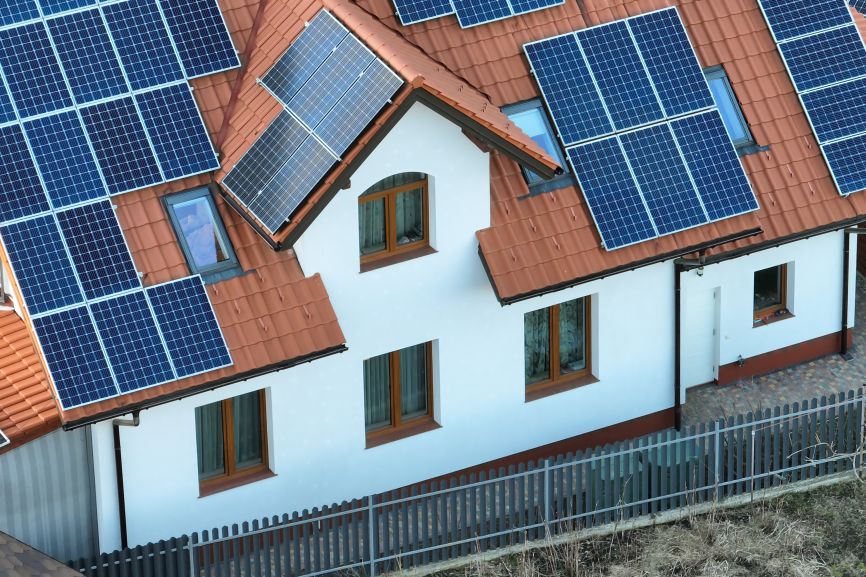500W Solar Panel Guide: Size, Amps, Daily Output & How Many Panels You Need
More homeowners, RV owners, and off-grid adventurers are asking the same question: is a single 500-watt solar panel enough to cover my energy needs? A 500W panel is one of the larger options available on the market today, capable of producing half a kilowatt of power under ideal sunlight. That’s enough to run several small appliances or contribute meaningfully to a larger solar system, but the exact output depends on your setup and usage. In this guide, we’ll break down three key points: how big a 500W solar panel actually is, how many amps it produces, and how many panels you really need for 500 watts of power.
What Does a 500 Watt Solar Panel Power?

A single 500-watt solar panel produces enough electricity to cover several everyday devices, especially when sunlight conditions are strong. On average, a 500W panel can generate between 1.5–2.5 kilowatt-hours (kWh) per day, depending on location and hours of sunlight. In practical terms, that’s enough to:
- Power a laptop for 10–12 hours
- Run a flat-screen TV for 4–6 hours
- Keep 15–20 LED light bulbs on through the evening
- Charge phones, tablets, or small kitchen appliances
- Support a compact refrigerator for part of the day
How you use this power depends on your setup. With direct use, you can run appliances while the sun is shining, but you’re limited to daytime operation. With battery storage, that energy can be stored and used anytime, even at night.
Keep in mind that actual performance varies with sunlight hours, panel orientation, weather, and efficiency losses from inverters or wiring. In ideal conditions, a 500W panel is a solid option for small households, RVs, or cabins looking for reliable supplemental energy.
How Big is a 500 Watt Solar Panel?
A 500-watt solar panel is one of the largest single-panel options available for residential and off-grid use. On average, these panels measure about 2 meters (79 inches) tall and 1 meter (39 inches) wide, with a thickness of 35–40 millimeters. They typically weigh between 25–30 kilograms (55–65 pounds), making them heavier and bulkier than smaller panels.
For comparison:
- A 300W panel is usually closer to 1.65m × 1m and weighs around 18–20 kg.
- A 400W panel often falls in the 1.7–1.8m range, slightly narrower and lighter than a 500W model.
This size difference matters when planning your installation. On a rooftop system, 500W panels can maximize power in limited space, reducing the number of panels needed. However, their weight and larger footprint require sturdy mounting and professional handling. For RVs, vans, or portable setups, the size can be a drawback, as maneuvering a 2-meter panel into place may be impractical compared to using several smaller panels.
In short, while 500W panels are space-efficient for rooftops, they may not be the best fit for mobile or compact solar applications.
How Many Amps Does a 500 Watt Solar Panel Produce?
To understand how much current a 500-watt solar panel generates, we use the basic formula:
Amps = Watts ÷ Volts
Since solar panels can be wired into systems with different voltages, the output varies:
- On a 12V system, a 500W panel delivers about 40 amps (500 ÷ 12 ≈ 41.6).
- On a 24V system, it produces around 20 amps (500 ÷ 24 ≈ 20.8).
- On a 48V system, the output is roughly 10 amps (500 ÷ 48 ≈ 10.4).
It’s important to note that these are theoretical maximums. In real-world conditions, the actual amperage is influenced by factors such as sunlight intensity, shading, panel orientation, temperature, and efficiency losses in the inverter and wiring. For example, you might see closer to 80–90% of the rated output on a typical day.
Knowing how many amps your panel produces is critical for system design. It ensures you choose the right charge controller, inverter, and battery bank to handle the load safely and efficiently. Without proper planning, you risk overloading components or underutilizing your solar investment.
How Many Solar Panels Do I Need for 500 Watts?

When people ask this question, it’s important to separate two scenarios. If you buy one 500-watt solar panel, you already have 500 watts of rated capacity in a single module. But you can also reach the same capacity by combining smaller panels, such as five 100W panels or two 250W panels wired together. The end result is the same in terms of total wattage, but the setup can look quite different.
Using one large panel has the advantage of efficiency and simplicity. You’ll need fewer mounts, fewer wiring connections, and less overall space if your roof can accommodate the size. However, the downside is reduced flexibility—if that single panel underperforms due to shade or dirt, your entire 500W capacity takes a hit.
On the other hand, multiple smaller panels offer more versatility. They can be spread out across irregular roof sections, angled differently, or even used in mobile setups like RVs. The tradeoff is more wiring, more components, and a slightly higher chance of efficiency loss.
Ultimately, the decision comes down to installation space, budget, and system design goals. Both approaches can effectively give you 500 watts of solar power.
Is a 500 Watt Panel Right for You?
A 500-watt solar panel can be a smart choice if you’re powering RVs, boats, small cabins, or as supplemental energy for specific appliances at home. Its high output in a single module makes it efficient where space is limited but reliable power is needed. However, if you’re planning a whole-home solar system, relying on one large panel isn’t practical. In that case, multiple panels spread across your roof give better coverage, flexibility, and redundancy. The key is to calculate your daily energy consumption in kilowatt-hours and compare it against the expected output of a 500W panel. This ensures your solar investment matches your actual energy needs.
Conclusion
A 500-watt solar panel is a powerful option for small-scale energy needs, whether you’re running household devices, outfitting an RV, or adding supplemental power to your home. Its effectiveness depends on factors like panel size, amperage output, and how it fits into your overall system design. By understanding these details, you can make smarter choices about whether a single 500W panel—or multiple smaller ones—suits your setup best.
Ready to explore your options? Get a custom solar design tailored to your needs today. [Request a Free Quote]
